
MEDSAN DentiTect Test
DentiTect is the latest DNA-based technology for the analysis of genetic predispositon to periodontal disease!
DNA-based, tailor-made solutions for tailor-made therapy.
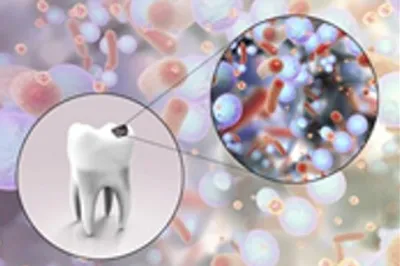
CARIES...MORE THAN JUST A HOLE IN THE TOOTH
Caries is probably the best-known dental disease. Exposure to acid-forming bacteria (especially Streptococcus mutans) attacks and breaks down the hard tooth enamel. As the infection progresses, the bacteria reach deeper layers of the tooth via the dentin to the pulp and destroy the tooth from the inside out.
Early stages can usually be eliminated by optimized oral hygiene. However, if the infection is more advanced it can spread to the jawbone and lead to the loss of the tooth.
Since the infection does not cause any symptoms for a long time, it is often only recognized when the damage is already clear. In advanced stages, there is also a certain risk that the pathogens can spread through the bloodstream and cause further damage elsewhere.
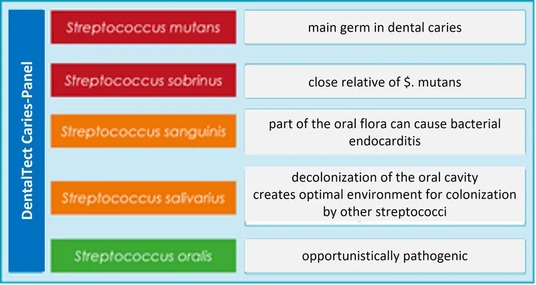
CARIES...MORE THAN JUST A HOLE IN THE TOOTH
DentiTect Tests can detect five caries-relevant subspecies of Streptococcus spp., including the primary cause, Streptococcus mutans. This information can be used to establish a bacterial profile and guide potential therapies or interventions.
Elevated streptococcal loads, for example, may indicate a hidden source of caries; the type of germs present may have implications for planned treatments.

PERIODONTITIS
Periodontitis is a bacterial infectious disease of the gums caused by a now well known set of bacteria. If undetected or untreated, infection with these pathogens can lead not only to problems in the oral cavity, including tooth decay, tooth loss, and bone loss, but also to secondary diseases that can result from the spread of said pathogens throughout the organism.
It is therefore important, not only for the sake of dental health, to accurately diagnose the load of pathogens and type of periodontitis in patients, in order to treat them selectively and effectively. Moreover, identifying the exact pathogen allows for targeted therapy, potentially avoiding the need for large-scale broad-spectrum antibiotics.
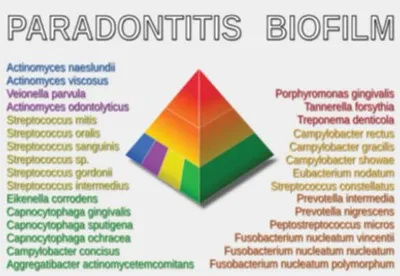
PERIODONTITIS PATHOGENS
The bacterial load in periodontitis is caused by the formation of a complex biofilm on the tooth surface. This film is formed by the settlement of various species of microorganisms of the oral flora on the tooth surface together with the accumulation of their metabolic products, saliva and food residues.
If certain species of pathogenic bacteria multiply in this film, periodontitis occurs. The presence of certain pathogens can provide information about and how far the inflammatory process has progressed.
With DentiTect, the pathogens present can not only be diagnosed extremely precisely using state-of-the-art DNA-based technology, but also within a few hours enabling the treatment to be initiated as quickly as possible. Pathogens are detected by selectively amplifying a DNA fragment, which is specific to each bacterium. A sophisticated control system also minimizes the possibility of false-positive / false-negative results.
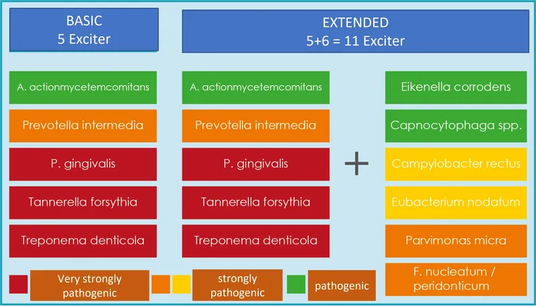
WE TEST FOR 30 PATHOGENS
Current or previous infection with F.nucleatum may be associated with increased risk of artery blockages that can cause heart attacks.
Oral dysbiosis is thought to be closely linked to cardiovascular disease and various species including, Streptococcus mutans and Porphyromonas gingivalis, which have been shown to increase with the occurrence of periodontal disease and systemic inflammation.
Known as atherosclerosis, this fatty plaque is the hallmark of coronary artery disease. People with gum disease (also known as periodontal disease) have two to three times the risk of having a heart attack, stroke, or other serious cardiovascular event.
BE THE DENTIST OR ORTHODONTIST TO PREVENT YOUR PATIENTS FROM HAVING HEART & CORONARY ARTERY DISEASE.
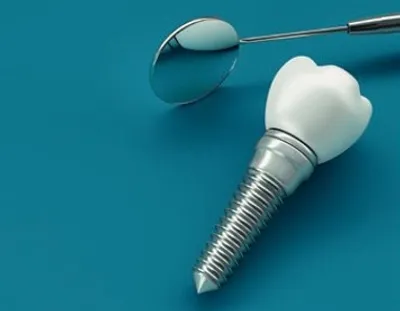
PERIIMPLANTITIS IN IMPLANTOLOGY
Periimplantitis refers to a special form of periodontitis when the inflammatory disease of the gums occurs in the context of a dental implant. In that case, the bacterial infection of the surrounding tissue can cause the implant not to grow in properly or loosen again after successful implantation. Therefore, it is advantageous for the success of such a large and costly procedure and in the best interest of the patient to evaluate the potential bacterial load beforehand and, if indicated, to initiate prophylactic therapy.
Since the bacterial spectrum is identical to that of regular periodontitis, DentiTect also offers a fast and precise diagnostic solution for Periimplanitis.
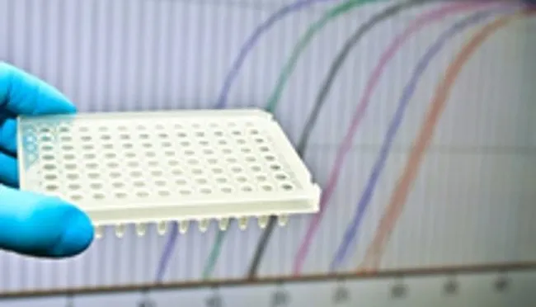
PERIIMPLANTITIS IN IMPLANTOLOGY
Since the bacterial spectrum is identical to that of regular periodontitis, DentiTect also offers a fast and precise diagnostic solution for Periimplanitis.
Advantages:
- Waiver of broadband treatment
- Selective Antibiosis
- Risk Assessment prior to implant procedures
- Early Detection of Infection
- Simple & Fast Sampling
- Risk- and Pain free for the Patient
Test Indication:
- Patients with pocket depth > 4 mm
- Periodontitis Resistency to Therapy
- Recurrent Periodontitis
- Acute Periodontitis
- Planned Implant Surgery
- As part of Prophylaxis

GENETIC DISPOSITION & MUTATIONS IN IL-1
Mutations in IL-1 are until now an undetected risk factor!!!
Despite good oral hygiene and low infestation by the aforementioned dental pathogenic bacteria, some patients experience jawbone resorption despite the apparent absence of risk factors. Kornman et al. discovered that more than 50% of these patients share a genetic characteristic: mutations in interleukin-1 (IL-1) and its receptor (IL-1RN) lead to a disturbed balance between osteoblasts (bone-building cells) and osteoclasts (bone-degrading cells) in favor of the osteoclasts. This leads to inflammatory processes, increased degradation of bone substance and - in the case of dental implants - to an increased rate of loss of the implant.
From a simple swab of the oral mucosa, DentiTect IL-1 can determine the relevant polymorphism in IL-1 / IL-1RN at the DNA level, opening up new options for individualized patient treatment. Determination of interleukin status can be a valuable tool for evaluating risks, individualizing follow-up and prophylactic measures, and increasing the success rate of dental implants.
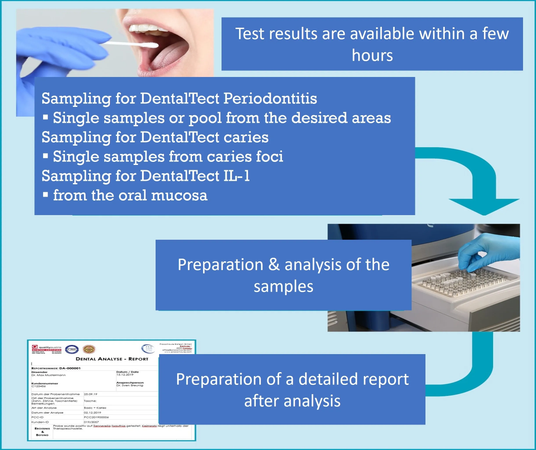
HOW WE TEST
MEDsanDx® system
•The heart of our pathogen diagnostics is the MEDsanDx® system. Highly specific sections of the respective pathogen DNA are amplified if they are present in the sample to be tested. This amplification can be observed by an increasing fluorescence signal in real time.
•To minimize false-negative results, an independent control is included in each reaction to provide information on whether the reaction was run correctly. All tests have been bioinformatically and experimentally evaluated for highest pathogen specificity.